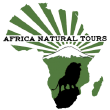
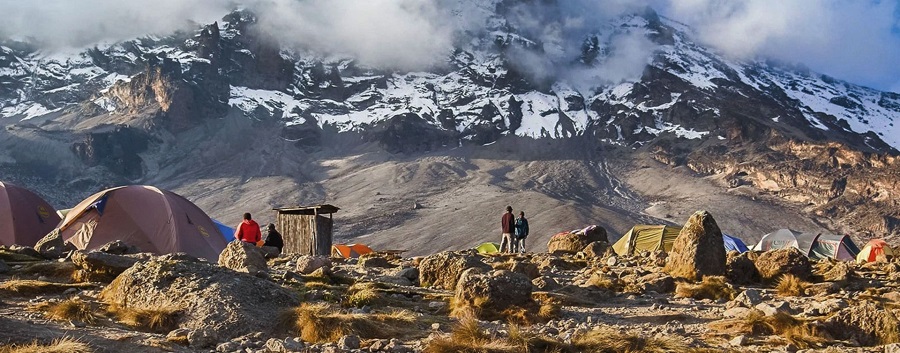
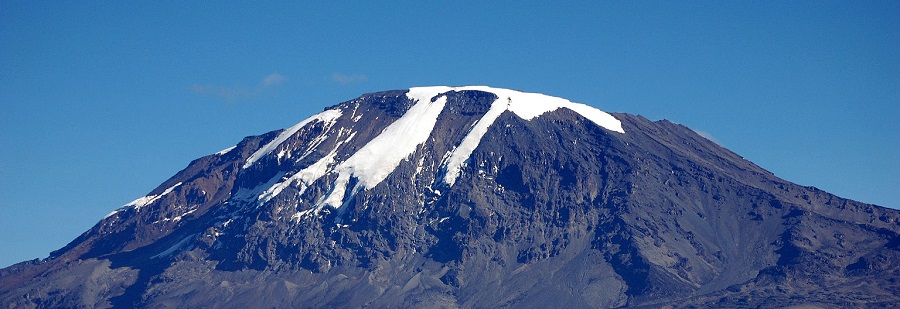
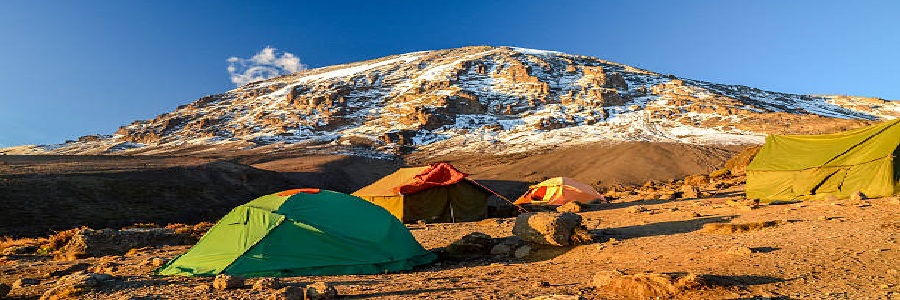

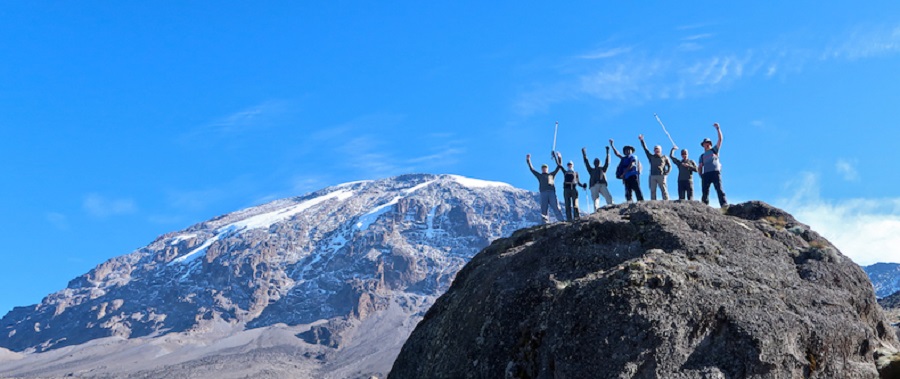
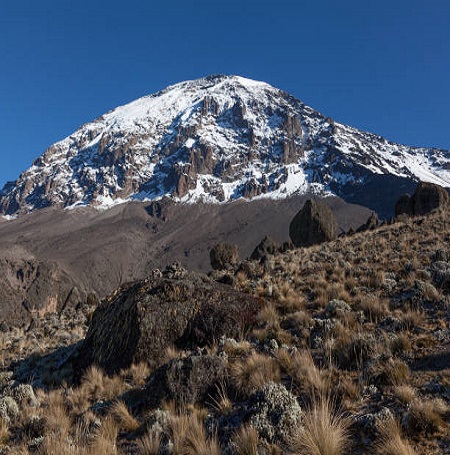
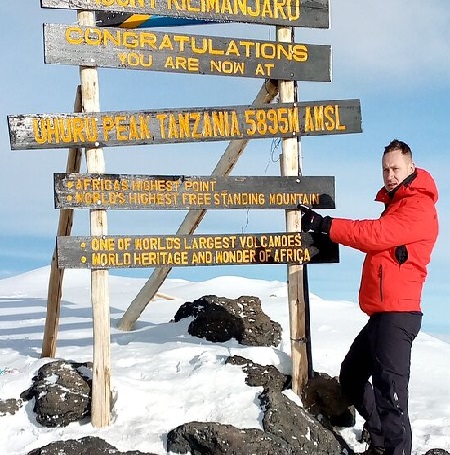



Mountain Kilimanjaro climbing equipment list makes sure you don’t forget anything important while planning and packing for the expedition. The below-listed items are samples to help you with the expedition pack. But it is not the final listing, and you can add or subtract according to your need. There are 10 complete mt Kilimanjaro climbing Equipment Gear List
1. Outer Clothing Wear
- Wind and waterproof hardshell pants and jackets
- Softshell pants and jacket
- Large insulated Parka
- Middle layer wind jacket
- Lightweight thermal trouser
- Lightweight down pants and jacket
- Breathable trousers with entire side zip
- Moisture wicking t-shirt
- Breathable long t-shirt
- Mid-weight fleece pullover
- Waterproof jacket with hood
- Rainwear: pants and jackets
- Fleece jacket
N.B: Avoid brining jeans and cotton to Kilimanjaro climb
2. Inner Clothing Wear
- Lightweight underwear
- Long underwear
- Expedition weight underwear
- Sport bra
3. Headwear
- Warm wool or synthetic cap that covers the ear
- Scarf, neck sleeve, or buff
- Balaclava
- Sun or ball cap
- 100% UV Glacier sunglass with side/ nose shield
- Ski goggles
- Headscarf or bandana for dusty condition
4. Hands and walking
- Inner Gloves
- Outer gloves
- Trekking poles
5. Foot Wear
- Mountaineering boots- plastic doubles with inner liner
- Synthetic/ leather hiking boots
- Running shoes, sandals, or cross-trainers
- Down boots (optional)
- Mid or heavy poly/ wool socks
- Poly or wool liner socks
- Vapor barrier liner socks
- Lightweight wool or poly trekking socks
- Light cotton or wool socks
6. Bags
- Duffle bag (Greater than 80 liters capacity)
- Day Pack
- Hydration Bladder
- Rain cover
7. Sleeping Gear
- Down sleeping bag for high altitude good for -35 (-30 )
- Additional sleeping bag for base camp good for -20 (-5 )
- Closed-cell foam mat for base camp and high altitude
8. Emergency first aid kit
- Personal first aid kit includes aspirin, antibiotics, band-aid, first-aid tape, painkiller, anti-diarrhea pill, anti-headache pills, cough, cold medicine, etc.
- Prescribed medication
- Skin blister repair kit
- Small bottle anti-altitude sickness pill
- Water filter or purification tablets
- Prescribed glasses or contact lens
- Earplug
9. Navigation
- Compass
- Map
- Guidebook or Route description
- GPS
- Satellite messenger
10. Miscellaneous
- Water bottle with insulation cover
- Headlamp with spare batteries
- Handwarmer
- Lighter or matchbox
- Repair kit
- Battery-powered watch or clock
- Digital camera
- Solar power banks
- Pocket knife/ multi-tool
- Disposable waterproof rubbish bag
- Journal with pen or pencil
- Compact binoculars
- Insulated seat pad
Mount Kilimanjaro is one of the most iconic and challenging mountains to climb in the world. Standing at 19,341 feet, this majestic peak in Tanzania attracts thousands of climbers each year. However, to successfully conquer this mountain, proper preparation and packing are essential. In this article, we will provide you with a complete Mount Kilimanjaro packing list to ensure you have everything you need for a safe and successful climb.
Clothing
When it comes to clothing, layering is key on Mount Kilimanjaro. The temperature can vary greatly throughout the day, so it is important to be prepared for all conditions. Here is a list of essential clothing items to pack
- Base layer: Moisture-wicking tops and bottoms to keep you dry and comfortable
- Insulating layer: Fleece or down jacket to keep you warm during cold nights
- Outer layer: Waterproof and windproof jacket and pants to protect you from the elements
- Hiking pants: Lightweight and quick-drying pants for trekking
- Hiking shirts: Long-sleeve shirts to protect you from the sun and bugs
- Underwear and socks: Moisture-wicking and breathable materials are recommended
- Hat and gloves: To keep your head and hands warm
- Buff or bandana: To protect your neck and face from the sun and wind.
- Sunglasses: UV protection is essential at high altitudes.
- Hiking boots: Sturdy and waterproof boots with good ankle support.
Packing for a Kilimanjaro climb is a multifaceted endeavor that requires careful consideration of various factors to ensure a successful and safe ascent. One of the primary considerations is the diverse climate and terrain encountered along the route, from the humid rainforest at the mountain's base to the freezing temperatures and high winds at the summit. As such, climbers must pack clothing and gear suitable for a wide range of conditions, including moisture-wicking base layers, insulating mid-layers, and waterproof outer shells to protect against rain and snow.
Specialized equipment is essential for navigating Kilimanjaro's challenging terrain and high altitudes. Sturdy and well-fitted hiking boots with excellent ankle support are crucial for traversing rocky paths, while trekking poles provide stability and reduce strain on joints during steep ascents and descents. Furthermore, a properly fitted backpack is essential for distributing weight evenly and carrying essential supplies such as water, snacks, and safety gear.
Thorough understanding of personal needs and preferences, as well as insights from experienced climbers, can inform gear selection and packing decisions. Consulting reputable sources for packing lists and advice can help climbers prioritize essential items while avoiding unnecessary weight. By meticulously planning and packing for the Kilimanjaro expedition, climbers can optimize their chances of success while ensuring comfort and safety throughout the journey.
Always check that your daypack has a built in rain cover. If it doesn’t, purchase one separately and keep it accessible at all times in case of a sudden downpour. Get your full Kilimanjaro Packing List which guides you through everything you’ll need to bring on your Kilimanjaro climb.
Personal gears
Clothes help you to stay safe, warm and dry with clean, high quality Base layers, Trousers, Shorts, Sun hat, Shirts, Jackets, Boots, footwear, Warm Balaclava, Warm Hat, Scarf, rain jackets Neck Warmer, Glove liners, Warm mitts or gloves, Gaiters, Socks, Thermal Bottoms and other gear including water Bottles, Hiking Poles, Sunglasses, Binoculars and More gear used when climbing Kilimanjaro to make your hiking enjoyable and memorable. When you are deciding to climb Kilimanjaro clothes is among of the best things you need to have. The hiking conditions can change dramatically from baking sunshine to a freezing wind. Layering your clothes gives you the flexibility to add and remove layers throughout the day so you stay warm and comfortable without getting sweaty. Sweat can turn bone-chillingly cold when you stop moving.
Camping’s Gear
These items are generally large and include tents and kitchen or cooking items. Tour companies should also provide camping gears in order to make the client fell comfortable. These camping gear including Quality Sleeping Bags, Camping Beds, Mattresses, Tables, Chairs, food, utensils, Fleece trousers, Thermal top, Fleece, Jacket, Down Jacket, Poncho, water and guides as the leadership. Camping equipment is carried by porters who are responsible to escort clients when they climb Kilimanjaro.
Safety Gear
These gears are most important because used when one has altitude mountain sickness (AMS) which is disease caused by low body oxygen. These gears including Oxygen cylinder, Oxygen saturation mete.